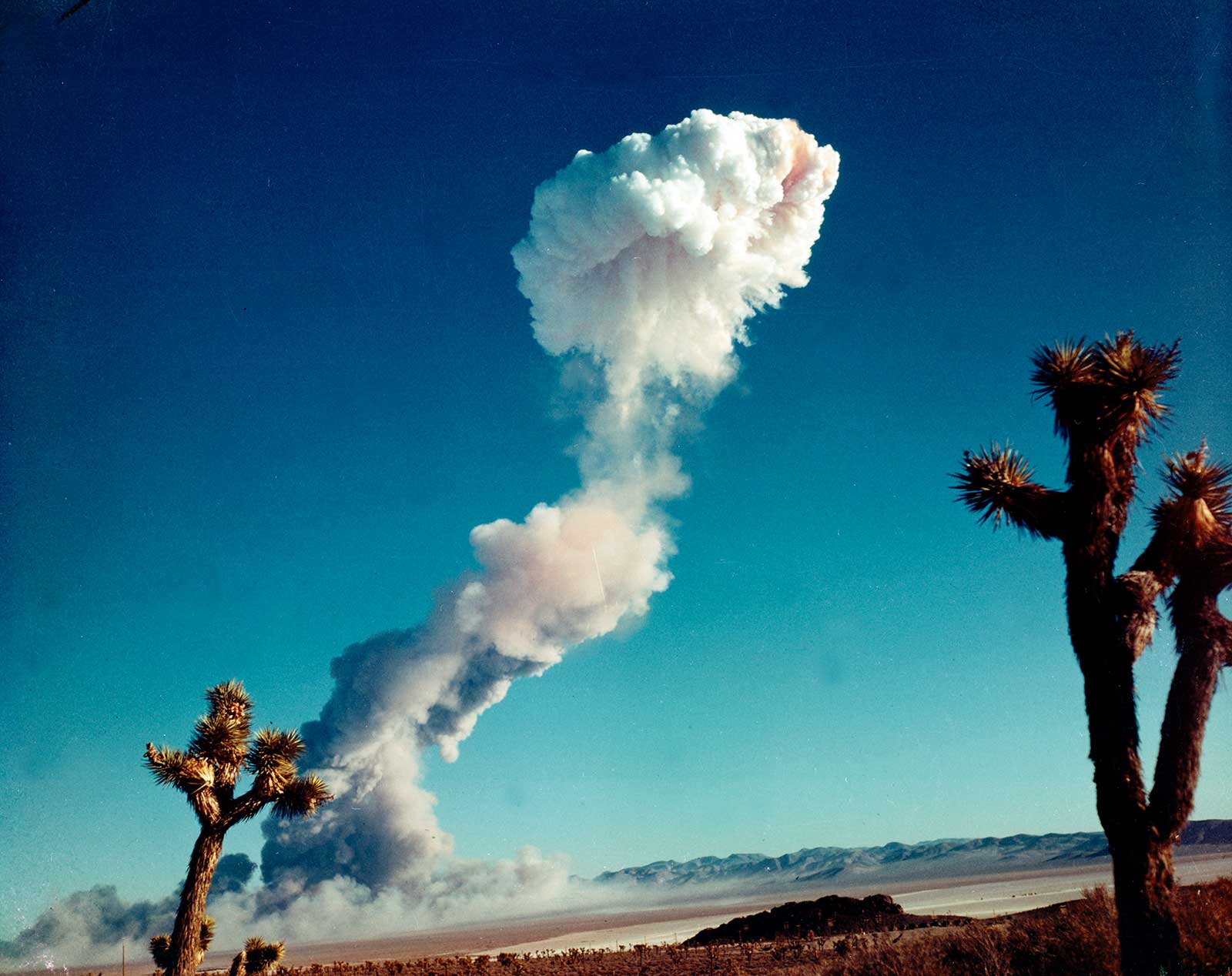The Mushroom Cloud
As the fireball increases in size and cools, the vapors condense to form a cloud containing solid particles of the weapon debris, as well as many small drops of water derived from the air sucked into the rising fireball.

Depending on the height of burst, a strong updraft with inflowing winds, called "afterwinds," are produced. These afterwinds can cause varying amounts of dirt and debris to be sucked up from the earth's surface into the cloud. In an air burst with a moderate (or small) amount of dirt and debris drawn up into the cloud, only a relatively small proportion become contaminated with radioactivity. For a burst near the ground, however, large amounts of dirt and debris are drawn into the cloud during formation.
The color of the cloud is initially red or reddish brown, due to the presence of nitrous acid and oxides of nitrogen. As the fireball cools and condensation occurs, the color changes to white, mainly due to the water droplets (as in an ordinary cloud).
The cloud consists chiefly of very small particles of radioactive fission products and weapon residues, water droplets, and larger particles of dirt and debris carried up by the afterwinds.
The eventual height reached by the radioactive cloud depends upon the heat energy of the weapon and upon the atmospheric conditions. If the cloud reaches the tropopause, about 6-8 miles above the Earth's surface, there is a tendency for it to spread out. But if sufficient energy remains in the radioactive cloud at this height, a portion of it will ascend into the more stable air of the stratosphere.

The cloud attains its maximum height after about 10 minutes and is then said to be "stabilized." It continues to grow laterally, however, to produce the characteristic mushroom shape. The cloud may continue to be visible for about an hour or more before being dispersed by the winds into the surrounding atmosphere where it merges with natural clouds in the sky.